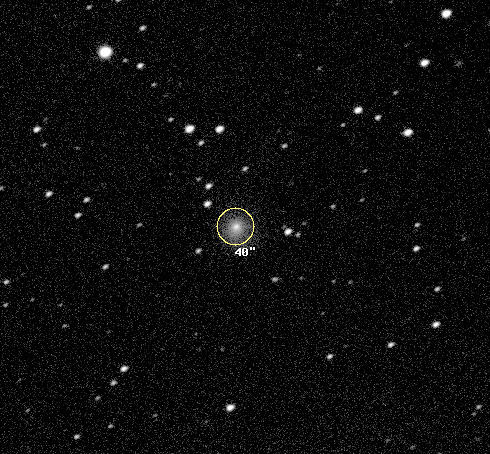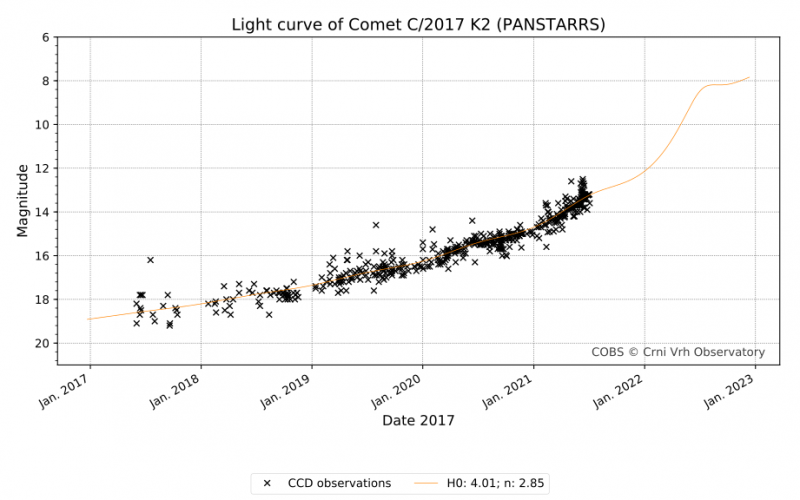2021 July 4
Comet of the Month – C/2017 K2 (PANSTARRS)
This month’s comet is C/2017 K2 (PANSTARRS).

It may not look like much but this is one of the most interesting comets in the sky at the moment. It was discovered by the by the Pan-STARRS1 (PS1) Survey on 2017 May 21 at a distance of 16.1 au from the Sun (CBET 4393) and it is due to come to perihelion on 2022 December 19. The orbit is almost exactly parabolic and we can’t tell whether this is a comet that is incoming from the Oort cloud for the first time, a repeat visitor or even interstellar in origin.
Following discovery several pre-discovery images were found all the way back to 2013 May 10 when it was 23.7 au from the Sun and already showing cometary activity. For a comet to be active that far from the Sun implies a very different activity mechanism to the one that we are used to for comets closer in. It is likely that the activity is due to very volatile ices such as CO. It is probable that this is quite a large nucleus, possibly 20km in diameter or more, but the comet’s perihelion distance of 1.8 au means that it will probably not get that bright, although it is a comet and so it could behave in expected ways. The lightcurve so far from COBS is shown here.

The first image we have in our archive is from Mike Olason on 2017 May 24 (here) and since then we have archived over 350 images here. The comet is currently well-placed for us in the UK, high up in the evening sky in Hercules (see this chart, 2017k2.pdf). It is currently around 13th magnitude and it has a coma diameter of around 40″. The comet is still 6au from the Sun but activity is picking up and it should brighten by a magnitude or so through the rest of the year. Next year it brightens rapidly and it should rise to around 8th magnitude by next summer. For the last few years it has been looping through Draco, Hercules and Lyra, the effect of parallax due to the Earth’s annual motion around the Sun, and we have had a great view of the comet from the northern hemisphere. That will change next summer as the comet dives south towards perihelion. The best views of the comet as it approaches perihelion will be from the southern hemisphere.
This is a fascinating comet and it is well worth observing. It should be detectable for imagers with a moderate sized telescope and there have already been reports of visual sightings. Alan Hale observed it from Cloudcroft, New Mexico on 2021 March 21.4, using a 0.41m reflector and he estimated it to be magnitude 14.2.
Please send any observations to cometobs@britastro.org following the guidelines here.
Further reading
https://arxiv.org/abs/1811.07180
https://arxiv.org/abs/2105.10986
https://arxiv.org/abs/1710.03876
https://iopscience.iop.org/article/10.3847/1538-3881/aa9be1/pdf
https://britastro.org/wp-content/uploads/2021/07/skyplot.PNG
| The British Astronomical Association supports amateur astronomers around the UK and the rest of the world. Find out more about the BAA or join us. |
